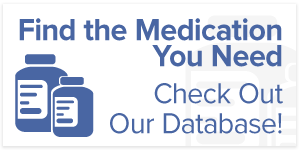Spreading awareness for junior rheumatoid arthritis may help individuals to prevent the progression of their disease, get help for their condition, and get information on how they can better live with their condition. Although junior Rheumatoid Arthritis can be challenging and detrimental, spreading awareness and education about the condition may give affected individuals the resources they need to live a more manageable and well-balanced life.
What is Junior Rheumatoid Arthritis
There really isn’t such a thing as being diagnosed with the medical condition “junior rheumatoid arthritis”. It’s just basically the term used to describe early stages and development of rheumatoid arthritis in children younger than the age of 16. Additionally, the term is used to generalize other autoimmune conditions which lead to symptoms of inflammation and may lead to the development of arthritis as well. Junior rheumatoid arthritis may also be described as “pediatric rheumatic disease”, but the terms are synonymous. According to the Arthritis Foundation, junior rheumatoid arthritis is a diagnosis that over 300k children in the United States share. These children may experience symptoms of pain, swelling, and redness of the skin where their joints are affected. There are a few different types of junior rheumatoid arthritis, so symptoms may vary according to they type of condition.
Various Types of Junior Rheumatoid Arthritis
Juvenile idiopathic arthritis: Idiopathic means that there is no known cause. This type of pediatric rheumatic disease is the most commonly diagnosed amongst children with arthritis. This specific type of arthritis has 6 different sub categories, depending on how long individuals have been experiencing symptoms and whether or not the symptoms affect other bodily systems or areas.
Juvenile Lupus: Although lupus is something mostly associated with the older population, it can definitely be diagnosed in younger individuals. This autoimmune disease is chronic and progressive, and can affect any organ of the body. With treatment, symptoms can be managed.
Mixed Connective Tissue Disease: Other autoimmune disease, this condition comes with many symptoms, making it challenging to diagnose. Individuals diagnosed with this disease may be subjected to symptoms caused by immune cells attacking healthy organ cells.
Juvenile Dermatomyositis: This autoimmune disease is characterized by symptoms of hand and eyelid rashes as well as weakness of the muscles. Small children are usually diagnosed with this condition and about 5,000 children between the ages of 5-10 are diagnosed with this disease yearly.
Juvenile Scleroderma: This rare condition affects more girls than boys, and is characterized by the development of hardened skin cells. It can either affect specific areas or the entire body, depending on the type.
Fibromyalgia: A common type of chronic pain condition, fibromyalgia affects the joints, resulting in painful symptoms like sleeplessness, exhaustion, and inflammation. More females are diagnosed with the condition, and in juniors, the condition is usually diagnosed post puberty.
Kawasaki: A very rare disease usually diagnosed in patients younger than 2 years old, patients are hospitalized until this disease’s symptoms subside. Early diagnosis is very important in keeping treatment effective.
Why do Children get Diagnosed with Junior Rheumatoid Arthritis?
The causes of these diseases is relatively unknown. But, there is research that supports that genetic and environmental causes may play a role. So, family history along with lifestyle choice can affect the chance that a child develops or is born with one of these conditions. The good news, although these diseases are life lasting, is that treatment is effective at keeping children in remission from flare ups of their specific condition. So, diagnosis is important so that the correct and most effective forms of treatment may be utilized as soon as possible.
Getting Help Paying for your Child’s Junior Rheumatoid Arthritis Medication
Many Americans, when their child is diagnosed with one of these diseases, experience the financial hardship of paying for medications needed for treatment. This is where the RX Helper steps in to offer solutions brought to you through patient assistance programs. Our company offers discounted medications from over 700 patient assistance programs, many of which may include treatments your child needs. To see if we discount or cover the cost of your child’s medication, visit our website. If you would like to start saving money on prescriptions, simply fill out the enrollment form. Once approved, you’ll receive your discounts and be able to feel good about the cost of your needed prescriptions!



